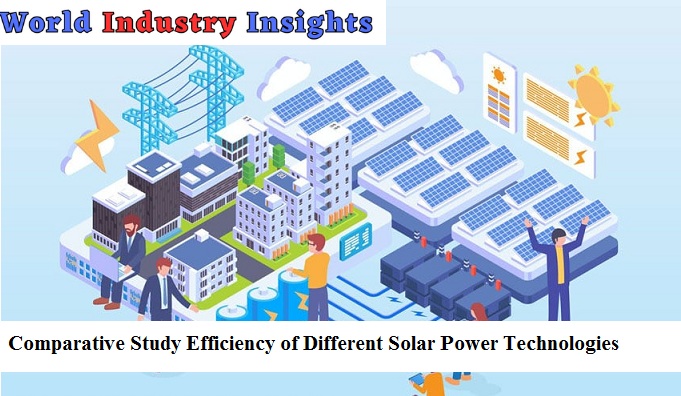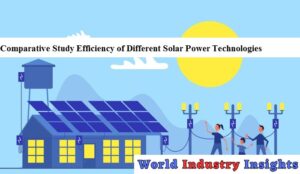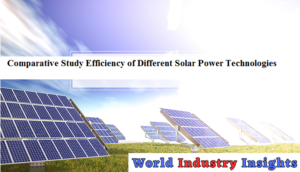Solar Power Technologies: Solar power technologies, those shiny beacons of a cleaner energy future, hold great promise for meeting our power needs and trimming our environmental footprint. In this down-to-earth comparison, we’ll unravel the complexities of different solar power technologies and how they stack up in the renewable energy race. With an eye on advancements, performance features, and factors that shape efficiency, we’ll gain insights into the bright future of solar power. So buckle up, we’re in for a sunny ride!
Photovoltaic (PV) Systems:
PV systems are the everyday superheroes of the solar world, transforming sunlight directly into electricity. They come in many forms, from the common mono crystalline and poly crystalline to the slim thin-film panels. Comparing their efficiencies is a bit like comparing apples to oranges, with factors such as material make-up, manufacturing techniques, and design playing a role. Let’s unpack their performance features, from energy conversion rates to temperature response and how well they fare under low light. We’ll also spotlight the shiny new kids on the block – multi-junction, tandem, and perovskite solar cells.
Concentrated Solar Power (CSP) Systems:
CSP systems use mirrors or lenses to play catch with sunlight, generating heat which then gets turned into electricity. The family includes parabolic troughs, power towers, and dish/Stirling systems. In the efficiency race, we’ll examine their concentration technology, heat transfer fluid, and thermal storage. We’ll dive deep into their performance traits like solar-to-electricity efficiency, energy storage muscle, and grid integration. We’ll also talk about CSP’s latest tricks of the trade, like molten salt storage, super heated steam technology, and hybrid solar-fossil fuel systems.
Solar Water Heating Systems:
Solar water heating systems are sun-powered hot water providers. They come in active versions, including direct and indirect circulation systems, and more laid-back passive types, like integral collector storage and thermostatic systems. Their efficiency hinges on design aspects, insulation materials, and heat transfer mechanisms. Let’s explore their performance traits, such as how well they capture heat, their storage capacity, and the efforts they require to keep running smoothly.
Solar Thermal Power Systems:
Solar thermal power systems use sunlight as a source of heat, which is then transformed into electricity. Their roster includes parabolic troughs, power towers, and Fresnel reflector systems. We’ll dissect efficiency factors like their solar concentration tech, heat transfer mediums, and thermal storage capabilities. We’ll also go over their performance, from how efficiently they generate electricity to how they manage heat and their environmental impact.
Emerging Solar Technologies:
Emerging Solar Technologies: The sun never sets on the world of solar power. We’ll chat about organic photovoltaic (OPV) cells, dye-sensitized solar cells (DSSC), quantum dot cells, and perovskite-silicon tandem cells. By comparing their efficiencies with traditional technologies, we’ll gain insights into their potential and the roadblocks they face.
Factors Influencing Solar Power Efficiency:
Solar power efficiency is a bit like a delicate dance. Solar radiance and geographical location set the stage, while elements like dust, shadow, obstructions, and maintenance habits can step on the system’s toes. We’ll look at how these factors shape the performance and uncover strategies to keep the dance smooth.
Case Studies and Real-World Performance:
Nothing beats a good story, especially when it comes to understanding solar power technologies. We’ll study some real-life examples and performances of different solar power plants and residential installations. We’ll also investigate the role environmental conditions play in shaping efficiency.
Technological Innovations for Enhanced Efficiency:
The solar power scene is a hotbed for innovation, with research and tech advancements pushing the boundaries of efficiency. We’ll delve into innovations, from refined materials and manufacturing processes to smart tracking and concentration systems, energy storage solutions, and the use of artificial intelligence and machine learning. These breakthroughs may hold the keys to a brighter, solar-powered future.
Economic Considerations and Future Prospects:
Money talks, especially when evaluating solar power technologies. We’ll do the math, weighing costs against return on investment (ROI) and payback periods. We’ll also examine how government incentives and policies influence the solar market. Finally, we’ll gaze into the crystal ball of market trends and growth projections to glimpse the sunny future of solar power.
Conclusion of Comparative Study Efficiency of Different Solar Power Technologies
Through this sunlit journey, we’ve explored the ins and outs of different solar power technologies. From PV systems and CSP systems to solar water heaters and thermal power systems, each has its own strengths. Understanding advancements, performance variables, and efficiency influencers help us make smart choices about harnessing the power of the sun. The renewable energy horizon looks promising, with solar power lighting the way.
FAQs:
Q1 What’s the top dog in solar power technology?
Ans: Currently, multi-junction solar cells take the crown for the highest sunlight-to-electricity conversion efficiency.
Q2 Does where I live affect my solar power efficiency?
Ans: Absolutely. The amount of sunshine your location gets can greatly affect the efficiency of your solar power system.
Q3 Will solar power systems work on cloudy days?
Ans: Yes, they will, although their efficiency drops a bit under cloud cover.
Q4 Is it worth investing in solar water heating systems?
Ans: Indeed, they can be a good investment in the long run by lowering your dependence on traditional heating methods.
Q5 What’s the outlook for solar power?
Ans: With technology advancing, supportive policies, and a growing awareness of our environment, the future of solar power is looking sunny indeed!
Our Reader’s Queries
What are the four main types of solar energy technologies?
Passive solar gain, solar thermal for heating, concentrated solar power for electricity, and solar photovoltaics for electricity are all different methods of harnessing the power of the sun. Passive solar gain refers to the process of using the sun’s energy to naturally heat a building without the use of mechanical systems. Solar thermal is a method of using the sun’s energy to heat water or air for use in heating systems. Concentrated solar power uses mirrors or lenses to focus the sun’s energy onto a small area, which is then used to generate electricity. Solar photovoltaics convert the sun’s energy directly into electricity through the use of solar cells.
What is the newest technology in solar?
Introducing the latest breakthrough in solar technology – tandem solar cells. These innovative cells have the ability to convert a significantly higher amount of sunlight into electricity compared to traditional solar cells. With their advanced capabilities, tandem solar cells are paving the way for a more efficient and sustainable future.
What are the three solar energy technologies?
Solar energy can be harnessed through three main technologies: photovoltaics (PV), which convert light into electricity; concentrating solar power (CSP), which uses thermal energy to drive electric turbines on a large scale; and solar heating and cooling (SHC) systems, which collect and distribute heat for various purposes. Each technology has its unique benefits and applications, making solar energy a versatile and sustainable source of power.
What are the three 3 different technologies used to concentrate solar power?
There are three primary types of concentrating solar power systems: linear concentrator, dish/engine, and power tower systems. Each system has its unique features and benefits. Linear concentrator systems use mirrors to focus sunlight onto a receiver tube, while dish/engine systems use a parabolic dish to concentrate sunlight onto a receiver. Power tower systems use a field of mirrors to reflect sunlight onto a central receiver tower. These systems are an excellent source of renewable energy and are becoming increasingly popular worldwide.



